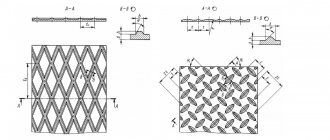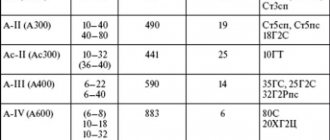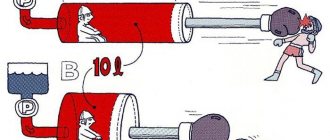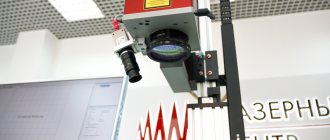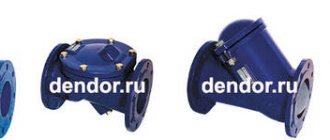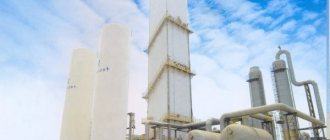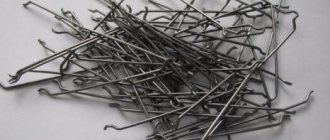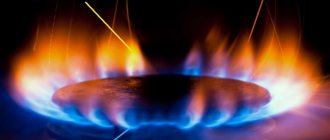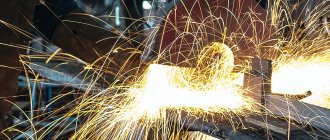Differences between hot-rolled and cold-rolled sheets
In production technology
Hot rolled sheets are produced at a temperature of 1150-1200°C at the first stage and at 900-950°C at the final stage. When cold rolling, the temperature will be 2.5-6 times lower - the choice of mode depends on the specific grade of steel.
The temperature during processing affects how the metal subsequently recrystallizes. The hotter it is in the furnace, the more intensely the structure of the steel changes. As a result, the finished product acquires different characteristics – mechanical and quality. It is the production technology that creates the key differences between the two types of rolled metal.
By properties
The characteristics of steel sheets depend on the alloy that was used in their production. Manufacturing technology is also of great importance.
What is the difference between cold-rolled and hot-rolled sheets in this case:
- Plasticity of the metal, which is higher for “cold” ones;
- Weldability - this indicator is also better for cold-rolled profiles;
- Fracture strength - “cold” sheets are considered more stable.
Additional Differences
The more the metal heats up, the more malleable it becomes in processing. In parallel with the expansion of the range of possibilities for its use, some restrictions appear regarding the creation of certain types of products. So, cold rolling will not allow you to make rails, and using hot rolling you will not be able to make a sheet thinner than 0.4 mm.
The difference between the types of steel sheets is as follows:
- The thickness of the “cold” sheet is from 0.35 to 5 mm, the “hot” sheet is from 0.4 to 160 mm;
- Cold rolling gives the sheet surface higher quality characteristics;
- Precision of production - the requirements for the production of cold-rolled profiles are much more stringent.
How to distinguish sheets from each other:
- Hot rolled:
- uneven surface;
- roughness;
- lack of shine;
- rounded edges.
- Cold rolled:
- Smooth surface;
- smoothness;
- shine;
- sharp edges.
The properties of different types of rolled steel affect the areas in which they can be used. They are often used interchangeably, but in most cases each of them has its own specifics and is used for specific purposes. It is worth noting that ultimately, production technology affects the cost of the finished product, and cold-rolled sheets will be higher in price.
To make it more convenient to compare the characteristics of sheets, look at their parameters in the table:
The difference is noticeable in the range and accuracy of rolled products. Thus, higher demands are placed on the quality of “cold” sheets, but their range is narrower than that of “hot” sheets.
Experts say that if you do a more in-depth analysis, there will be many more differences, for example, in mechanical strength, resistance to aggressive environments, or weldability indicators. At the same time, the variety of characteristics allows you to find exactly what you need without overpaying for properties that are not required for specific tasks.
Differences in production technology
The first thing that distinguishes hot-rolled sheets from cold-rolled sheets is the production technology. Please note the following points:
- Hot rolling involves a high thermal effect on the workpiece, which gives it increased ductility. As a result, it is possible to simplify the technological process and reduce its cost. But with this approach it is difficult to achieve uniform thickness, especially with small values.
- Cold rolling does not involve heating the source material. But later the sheet is subjected to etching, shot blasting, hardening and so-called tempering, which makes it possible to further improve the surface quality and increase the strength characteristics of the material.
The production technology itself determines the performance characteristics of cold-rolled and hot-rolled sheets.
Hot rolled sheets
Pros:
- a wide range of products in thickness and dimensions;
- relatively low price;
- the ability to carry out anti-corrosion treatment of products made from such sheets in different ways;
- versatility - can be used in almost all areas;
- relatively long service life.
Minuses:
- absence of a profile with a thickness of less than 0.4 mm;
- less resistance to corrosion;
- relatively low strength of welds;
- not suitable for the manufacture of elements for which there are high demands on the surface quality.
Cold rolled steel
Difference
Cold rolled steel is produced at temperatures below its recrystallization temperature, typically at room temperature. Because the steel is made at a much lower temperature, there is no need to worry about the steel abrading or changing its shape.
Appearance
Cold rolled steel products, such as cold rolled steel rod, have a smoother appearance and can have square corners that are more accurately sized and processed.
Mechanical properties
The yield strength and tensile strength of a cold-rolled specimen will be higher than a hot-rolled specimen, making the cold-rolled specimen less likely to fail under pressure.
Where is it used?
Cold rolled steel is much more preferred in the world of processing, where the quality of the steel is an important factor in the quality of the final product, and the appearance of the steel is also a very important factor. For these purposes, you can buy cold-rolled steel from a supplier.
Summary
Below are some of the main differences between hot rolled and cold rolled:
- Hot rolled steel is rolled or formed at high temperature, while cold rolled steel is rolled at normal temperature
- Cold rolled has a smooth and shiny surface, while hot rolled has a gray and scaly finish.
- Cold rolled steel has sharper corners and more accurate dimensions than hot rolled steel.
- In general, cold rolled products have better mechanical properties than hot rolled products.
- Hot rolled steel is cheaper because the cost is lower than cold rolled steel
Cold rolled sheets
Advantages:
- high accuracy and reduction of material losses due to the absence of excess;
- strength and corrosion resistance;
- fairly good weldability indicators, which allows the use of all types of welding, as well as high quality welds;
- the ability to use all anti-corrosion treatment technologies - galvanizing, powder painting;
- plasticity, thanks to which stamped parts are made.
Flaws:
- the main disadvantage is the limited sheet thickness of 5 mm;
- high cost compared to hot-rolled sheet.
Application areas of cold-rolled and hot-rolled sheets
The advantages of any product are fully realized only when it is used for its intended purpose. The main areas of application of hot-rolled sheets include :
- construction, where all types of hot-rolled steel are the main structural material for the construction of metal structures, including those with high load-bearing capacity;
- manufacturing of various industrial products: for example, freight cars, dump truck bodies, etc.;
- Hot rolled sheets are also used in the production of welded pipes, roll-formed sections and other products.
The main consumers of cold rolled sheets are:
- the automotive industry, where parts for passenger car bodies and truck cabins are stamped from cold-rolled sheets;
- manufacturers of roofing materials - metal tiles and profiled sheets.
Cold-rolled sheets are also used to make housings for electrical devices and equipment, metal utensils and many other products.
Areas of application
The division into advantages and disadvantages of hot-rolled and cold-rolled steel sheets is arbitrary, since each of them is suitable for certain purposes. Both are widely used in a variety of fields.
Hot rolled sheet:
- In construction, all types of sheet metal are the basis for creating metal structures of various scales and purposes, in particular those that require enhanced load-bearing capacity;
- “Hot” sheets are used to make freight cars, dump truck bodies and other parts;
- Hot rolled steel sheets are suitable for the production of welded pipes, bent sections and many other products.
Cold rolled sheet:
- It is used in the automotive industry - body parts for passenger cars and truck cabins are made from it;
- Used for the production of roofing materials, such as metal tiles, corrugated sheets;
- The “cold” sheet is used to make housings for electrical appliances and various equipment, even dishes and other household items.
Both hot-rolled and cold-rolled sheets find their application in a variety of fields. The main thing is to use each type of rolled metal for its intended purpose. With proper processing and operation, they will be equally resistant to corrosion and will last as long as possible.
Pros and cons of both types of material
To understand which sheet is better, hot-rolled or cold-rolled, let's look at the performance indicators of both rolled products:
- Hot rolled sheets can be produced with a thickness of up to 200 mm, it all depends on the capabilities of the equipment. Such sheet steel has a more favorable cost. But there is one thing: the material of this class does not differ in the accuracy of the sheet shape, thickness, or surface quality. This limits the scope of application of materials of this class.
- Cold-rolled sheet is suitable for applying any additional coatings; it has precise geometry, uniform thickness, and clean surface finish. The only negative is that it costs significantly more, which is the main difference between cold-rolled and hot-rolled sheets.
The cost and different performance characteristics determine the scope of application of these types of sheet metal.
Hot Rolled Steel Sheet
During operation, slabs (blanks, billets) are heated to 920 degrees Celsius (1700 Fahrenheit) to achieve the required plasticity and, when heated, are fed to several pairs of rotating rolls, the distance between which is adjustable. This produces a sheet with a thickness ranging from 4 mm (thin sheet rolling) to 160 mm (thick sheet rolling).
Hot Rolled Steel Sheet
Heating the metal so strongly leads to the formation of scale. If you do not remove it completely, this will lead to hidden or obvious defects in the metal product. The heating is not uniform over the entire area of the sheet, which causes differences in parameters such as sheet thickness, width and shape. Hot rolled sheets are successfully used in the construction of large industrial buildings, train stations and airports.
Disadvantages of hot rolled sheet:
- Uneven surface.
- Considerable thickness.
- Difficulty at work.
Properties
The parameters of hot roller sheet material include the following:
- Wide range of possible product thicknesses. Rolled HA can be either thick sheet or thin sheet.
- High corrosion resistance of metal after heat treatment.
- The surface is uneven and may have some imperfections.
- Good plasticity of products.
- Low cost of hot-rolled sheets.
Cold rolled steel has the following distinctive features:
- It consists of thin layers of steel.
- Thanks to the peculiarities of the production process, high geometric accuracy is achieved.
- Products are less plastic.
- The corrosion resistance of cold-rolled steel sheets is lower than that of hot-rolled products.
- Easy to weld and ensures high quality.
- It has a smoother surface without defects.
Cold-rolled steel sheets also have a higher cost. This is due to a more complex and costly manufacturing process.
